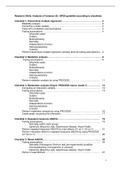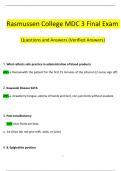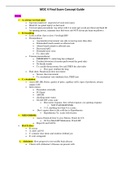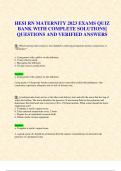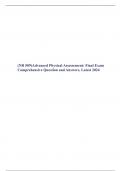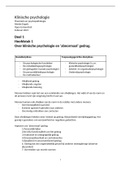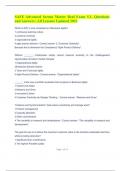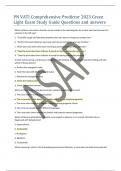Samenvatting
Summary Checklists performing analyses for Research Skills: Analysis of Variance (880434-M-3, 880586-M-3)
- Vak
- Instelling
Checklists for performing statistical analyses (hierarchical multiple regression, mediation analysis, Moderation analysis (Hayes’ PROCESS macro model 1), repeated measures ANOVA, mixed ANOVA. In addition to using the checklists for the exam and assignments of the course, the checklists can be u...
[Meer zien]
